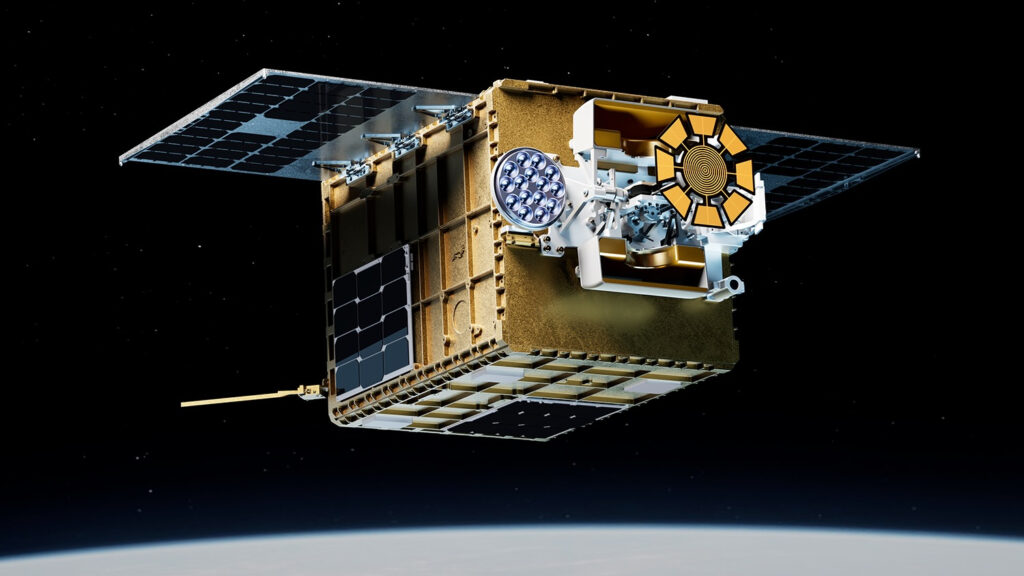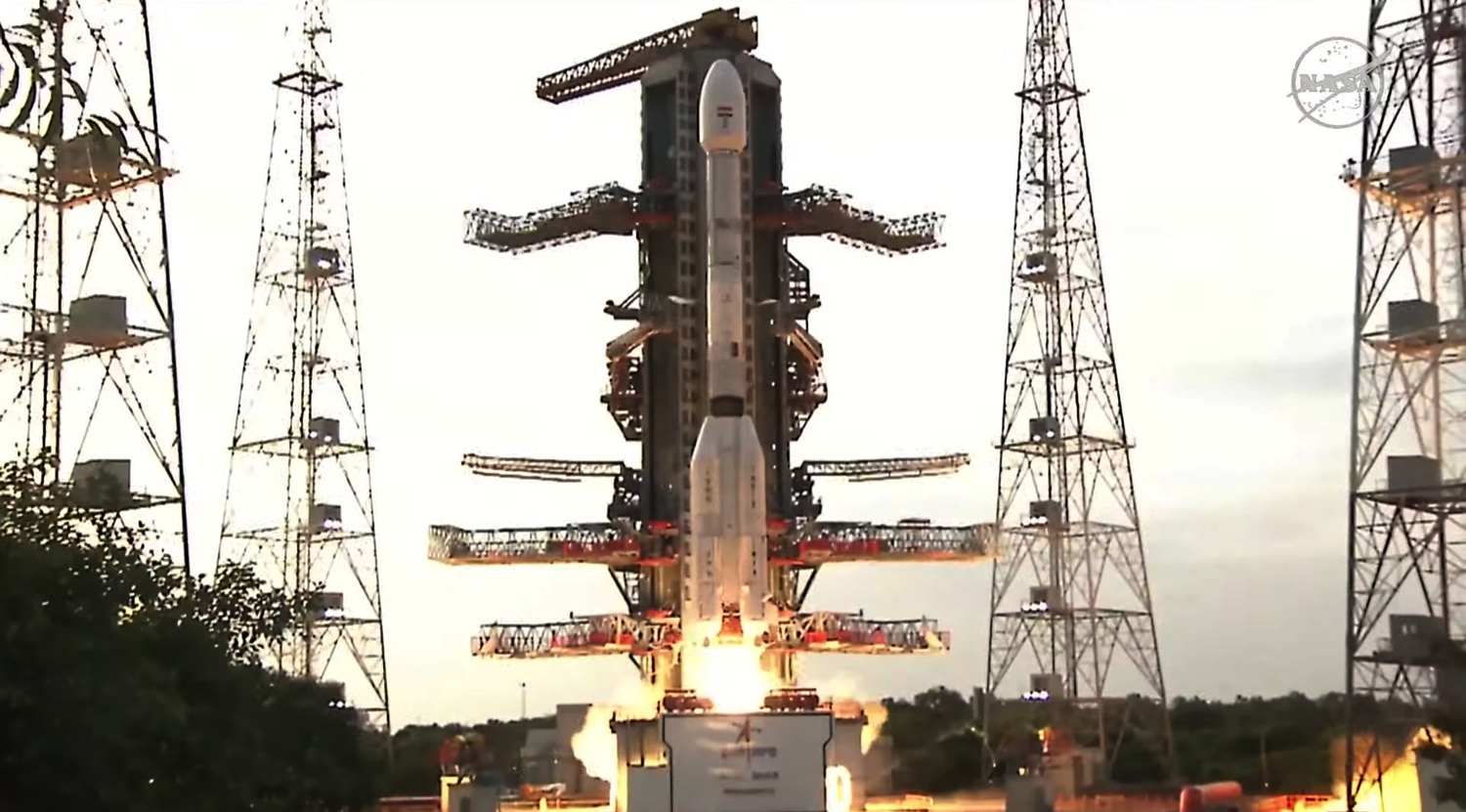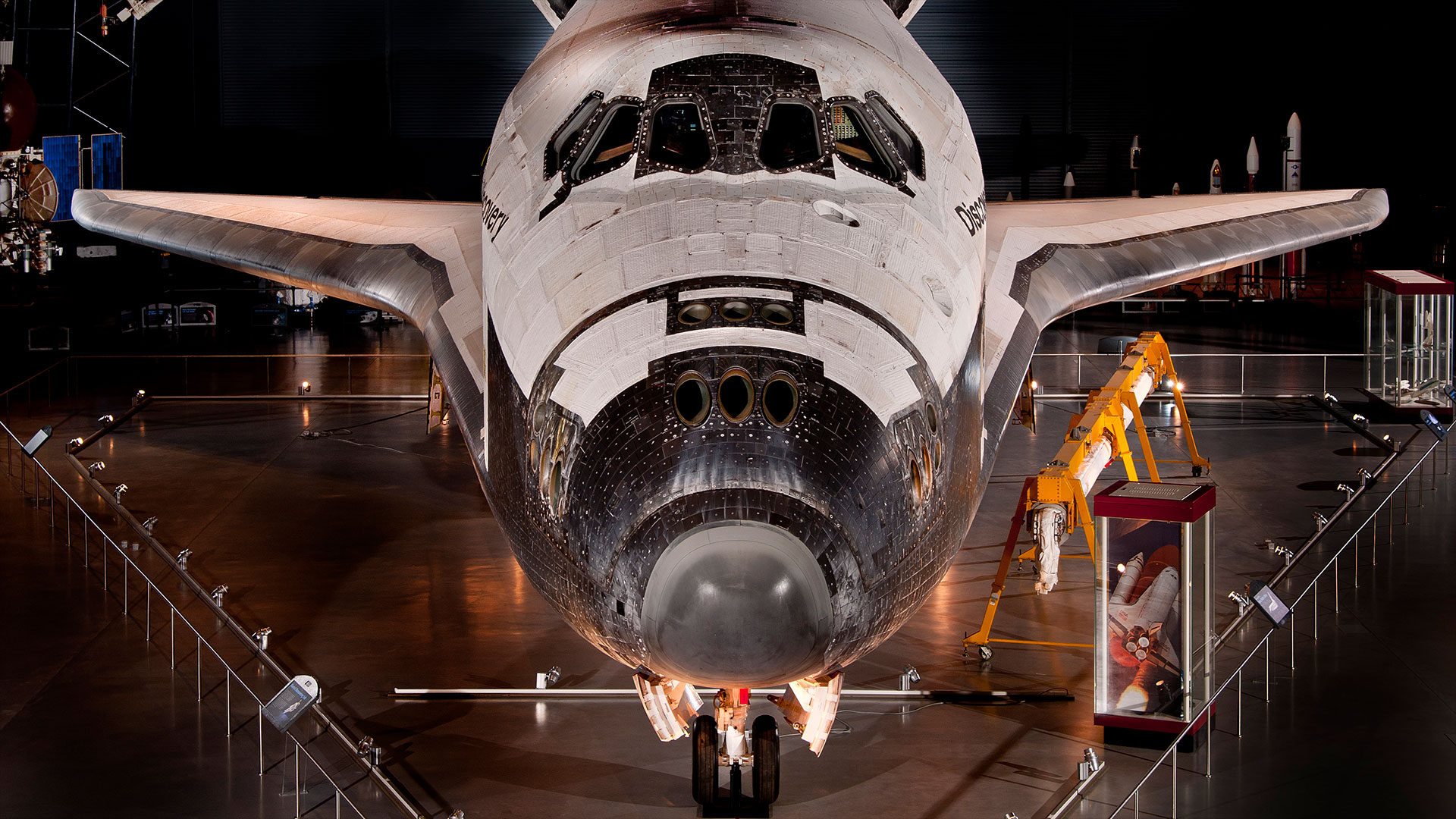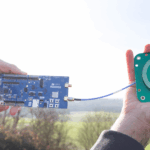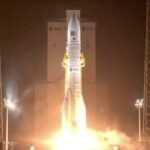Now Reading: ‘The most sophisticated radar we’ve ever built’: US-Indian NISAR satellite launches to track tiny changes on Earth’s surface (video)
-
01
‘The most sophisticated radar we’ve ever built’: US-Indian NISAR satellite launches to track tiny changes on Earth’s surface (video)
‘The most sophisticated radar we’ve ever built’: US-Indian NISAR satellite launches to track tiny changes on Earth’s surface (video)
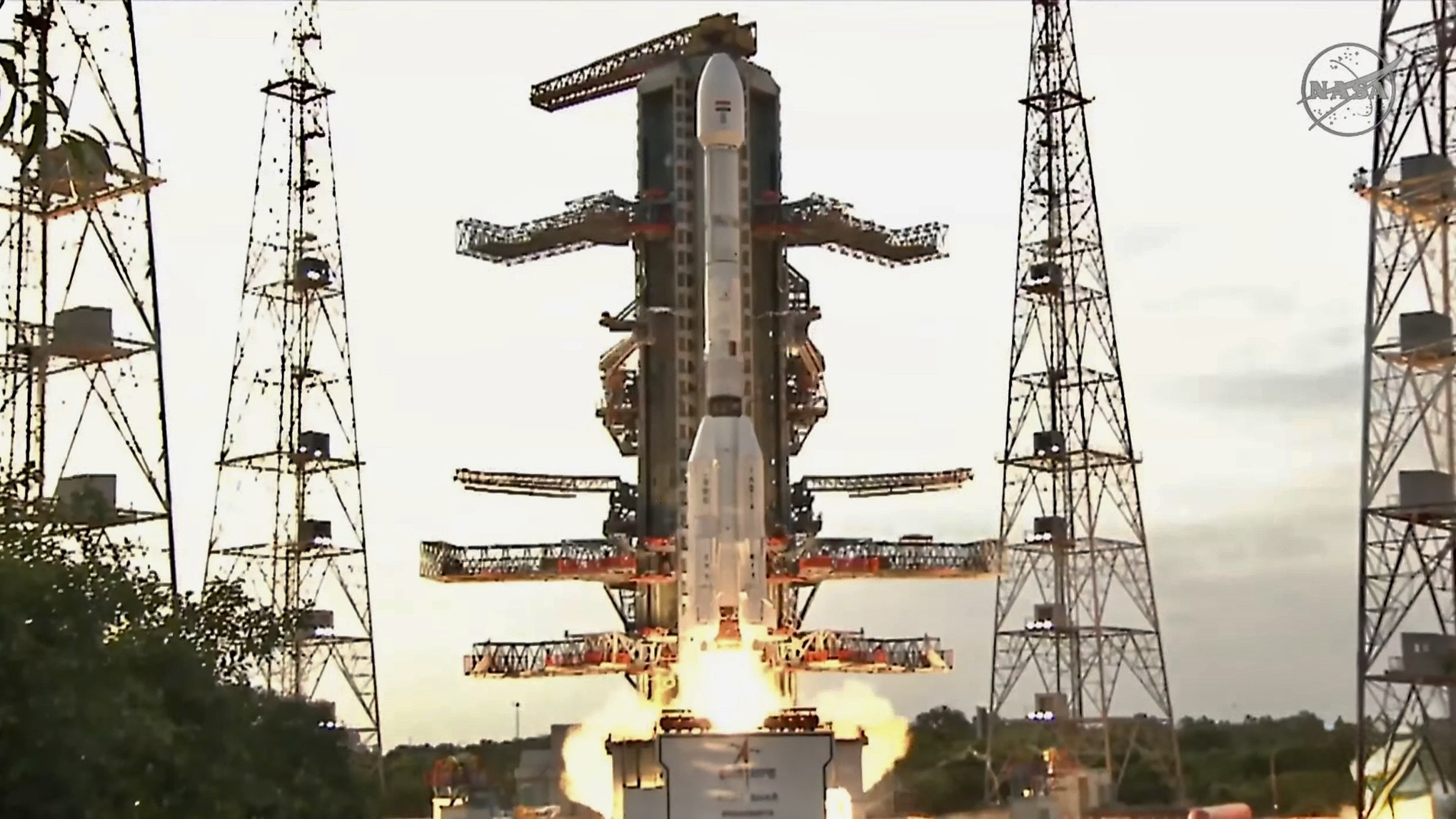
The U.S. and India just sent a powerful new set of radar eyes into the sky.
The NISAR satellite, a joint mission of NASA and the Indian Space Research Organization (ISRO) lifted off today (July 30) from Satish Dhawan Space Centre in southeastern India, opening a new era of radar Earth observation.
NISAR is “the most sophisticated radar we’ve ever built,” Karen St. Germain, director of NASA’s Earth Science Division, said during a prelaunch briefing on Monday (July 28). “The science of NISAR will advance our understanding of the Earth system with cutting-edge technology capable of studying changes in land and ice — changes as small as a centimeter, in any weather and in both darkness and light.”
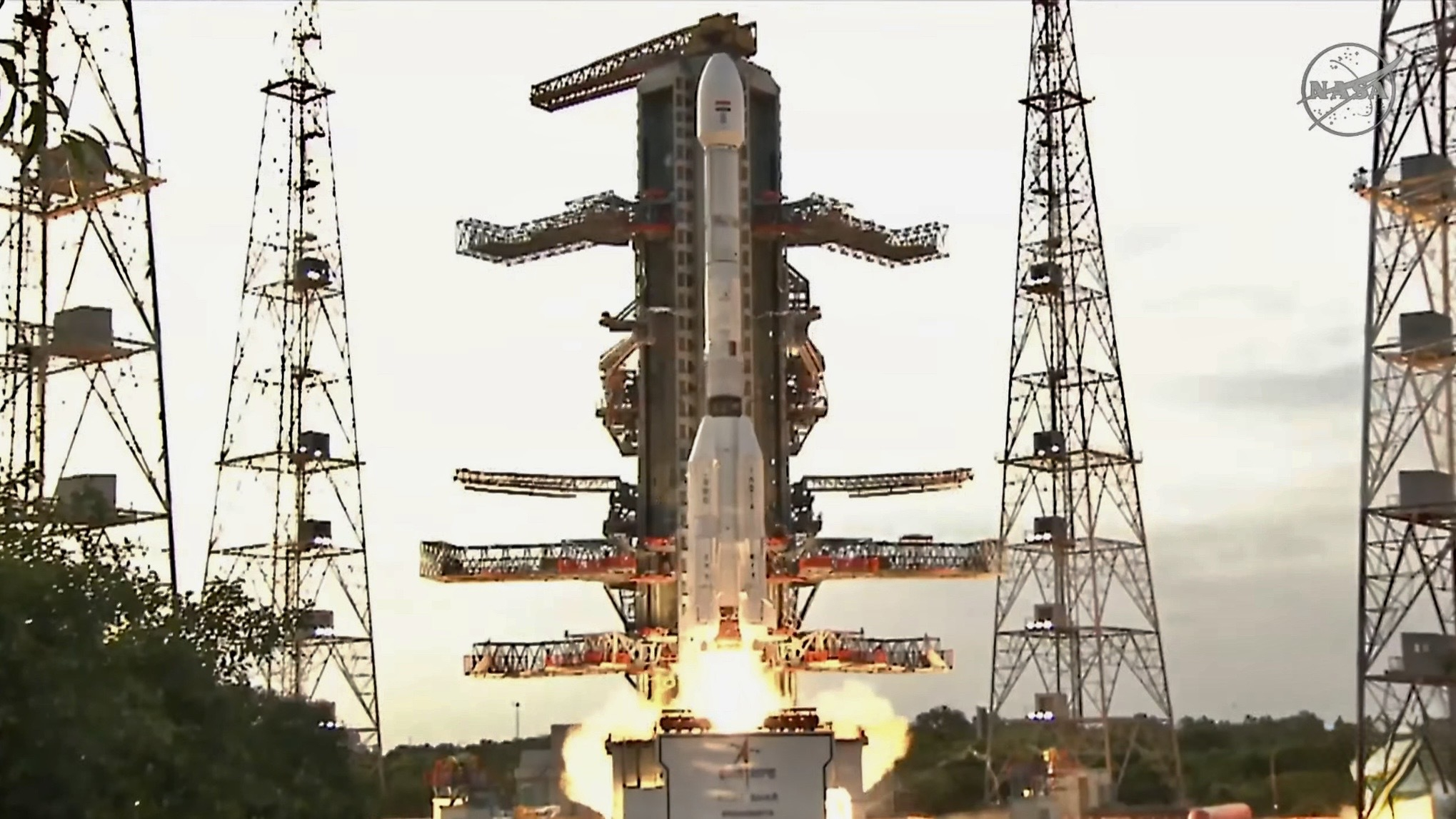
NISAR (short for NASA-ISRO Synthetic Aperture Radar) rose off the pad today at 8:10 a.m. EDT (1210 GMT; 5:40 p.m. India Standard Time) atop a GSLV Mk II, one of India’s brawniest rockets.
The three-stage, 170-foot-tall (52-meter-tall) launcher (whose name is short for Geosynchronous Satellite Launch Vehicle Mark II) did its job, deploying NISAR into a 463-mile-high (745-kilometer-high) orbit about 18.5 minutes after liftoff as planned.
“I am extremely happy to announce that GSLV Mk II vehicle has successfully and precisely injected the NASA ISRO Synthetic Aperture Radar satellite, NISR satellite, bringing 2300 kg into its intended orbit,” ISRO Chairman Dr V. Narayanan said to mission operators and guests in attendance at the launch after confirmation of payload separation. “Let me congratulate all the teams from ISRO and NASA JPL on this outstanding success.”
Following his remarks, NASA Deputy Associate Administrator Casey Swails said, “on behalf of NASA, I just I want to congratulate all of the teams. It is been just an incredible decade, culminating in this moment, from the technical collaborations, the cultural understandings, getting to know each other, building that team across continents, across time zones.”
“This Earth science mission is one of a kind, and really shows the world what our two nations can do. But more so than that, it really is a pathfinder for the relationship building that we see across our two nations,” she said.
Mission team members will spend the next 90 days or so checking out NISAR and its various systems, making sure everything is working well. Then, the satellite will begin its ambitious Earth-observing mission.
NISAR will scrutinize our planet’s surface using synthetic aperture radar (SAR), which can peer through clouds and operate in all lighting conditions. The spacecraft sports two SAR instruments, one built by NASA and the other by ISRO. Their radar signals will be beamed down to Earth by a 39-foot-wide (12-meter-wide), NASA-built antenna reflector, which launched in a folded configuration. The gold-plated mesh reflector will also catch the returning waves, which will hold lots of interesting information about the surface that bounced them back.
“With NISAR, we will see the precursors to natural hazards, such as earthquakes, landslides and volcanoes,” St. Germain said during Monday’s briefing.
“We’ll see land subsidence and swelling, movement, deformation and melting of mountain glaciers and ice sheets covering both Greenland and Antarctica, and, of course, we’ll see wildfires,” she added. “We’ll also see human-induced land changes, such as farm and ranch production, use of water for municipal drinking and farm irrigation and infrastructure, land development, houses, commercial buildings, railroads, highways and bridges.”
Related Stories:
NISAR’s orbit takes it over both poles, so the satellite will get a good look at Earth’s ice sheets. NISAR will scan almost all of the planet’s ice- and land-covered area every six days, and it will do this work for at least five years. (The NASA SAR instrument has a three-year baseline mission life, but its ISRO counterpart is supposed to operate for five.)
The total cost of the NISAR mission is about $1.5 billion, according to India Today. NASA is footing about 80% of that bill, the outlet reported.
NISAR’s roots go all the way back to 2007; the mission was a response to the Earth-observation priorities laid out that year in a “decadal survey” published by the U.S. National Academy of Sciences. The NISAR partnership was officially forged on Sept. 30, 2014, with the signing of documents by then-NASA Administrator Charles Bolden and then-ISRO Chairman K. Radhakrishnan.
Stay Informed With the Latest & Most Important News
Previous Post
Next Post
-
 012024 in Review: Highlights from NASA in Silicon Valley
012024 in Review: Highlights from NASA in Silicon Valley -
 02Panasonic Leica Summilux DG 15mm f/1.7 ASPH review
02Panasonic Leica Summilux DG 15mm f/1.7 ASPH review -
 03From Polymerization-Enabled Folding and Assembly to Chemical Evolution: Key Processes for Emergence of Functional Polymers in the Origin of Life
03From Polymerization-Enabled Folding and Assembly to Chemical Evolution: Key Processes for Emergence of Functional Polymers in the Origin of Life -
 04How New NASA, India Earth Satellite NISAR Will See Earth
04How New NASA, India Earth Satellite NISAR Will See Earth -
 05And Thus Begins A New Year For Life On Earth
05And Thus Begins A New Year For Life On Earth -
 06Astronomy Activation Ambassadors: A New Era
06Astronomy Activation Ambassadors: A New Era -
07SpaceX launch surge helps set new global launch record in 2024














